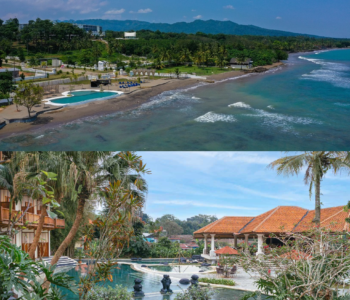
Over the last few months, Jakarta residents have once again come face-to-face with difficulties posed by intensifying air pollution. On 13 August 2023, the ranking of Jakarta air quality was statistically the worst in the world according to data from organisations like IQAir, sparking serious concern among citizens.
Whilst the smog itself is quite visible across the city’s horizon, and real, physical health concerns are emerging, the sources of and solutions for this pervasive pollution remain hazy, despite the fact that this is not a new issue.
This air quality crisis, as we believe it should be addressed, is exacerbated by a disappointing lack of accountability, let alone action. What it has made transparent are the ‘agendas’ that certain ministries seem to have, and the inability of officials to see just how holistically it needs to be tackled, and how interconnected the issue really is. Whether that is incompetence or deliberate negligence, you can decide for yourself.
For example, in a statement published in Kompas (13 August), the Director of Air Pollution Control of The Ministry of Environment and Forestry (KLHK) publicly questioned the measurement tools used, she explained that tools manufactured abroad may not necessarily be able to accurately measure the air quality index in Indonesia.
Well, one organisation, Nafas, has more than 180 air quality sensors spread across the city. Using sensors manufactured by Airy, these are multi-pollutant, hyperlocal air quality monitoring sensors, used across the EU, including strategic partnerships with the UK’s National Health Service and the Norwegian Institute for Air Research. They measure the exact pollutants, gases and particles, that we should be concerned about here in Jakarta.
Now, according to Nafas’ July 2023 Air Quality Report, out of the accumulated days of May, June and July, only 20,3% of them were measured with ‘Moderate’ air quality, meaning the remaining days were either ‘Unhealthy’ (22%) or ‘Unhealthy for Sensitive Groups’ (57,7%). With consistently appalling numbers, it seems rather convenient to undermine the technology itself… Doesn’t the old adage ‘a good workman never blames his tools’ come to mind?
The same article quotes the Director General of Environmental Pollution Control, who said:
“Do we want to sacrifice improving air quality by buying fuel that is more environmentally friendly? If we don’t want to, we will eventually fall into a trap. There are 24.5 million motorised vehicles in DKI Jakarta… What does everyone use in the Netherlands? Bicycles. In Germany, people also ride bicycles, there are lots of public transportation.”
The irony in this statement cannot be understated. As whilst he appears to put the full onus on Jakarta residents (causing quite the uproar), it actually backfired as it spotlights the fact that Jakarta’s own public transportation infrastructure, be it bike lanes or busways, simply does not have the capacity or reach to effectively manage the commuting needs of its citizens. Certainly not enough to manage a considerable conversion away from personal transportation, as is being suggested. And so, the statement inadvertently turns the blame back on city officials!
Adding to the irony: the use of public transportation requires citizens to be outdoors, where they would be more at risk. So in fact the air pollution disincentives the use of public services! Thus, we find ourselves in a chicken-and-egg-style stand-off between citizen and city.

Unfortunately, this comes at a time when Jakarta is genuinely seeing positive developments in the city transportation networks, which makes this all the more sad, including the LRT, MRT, integrated walkways and the Transit Oriented Development.
Alongside that, we’ve been seeing a widespread embrace of a more outdoor lifestyle, helped by the changes in urban planning. This includes the increasing popularity of al-fresco venues, ‘urban forests’ and gardens, outdoor sports or gyms and a general acceptance of pedestrianism. It’s a huge step forward in creating what we might call a ‘livable, metropolitan city’, marking both a major physical and mental shift in the population… now this is being reeled back as citizens fear the side-effects of simply being outside, exposed to pollutant-filled air.
The difficulties continue. KLHK’s eight recommended strategies to tackle air pollution include a lot of conversion to electricity, including encouraging the use of EV cars, EV-based public transportation and even opting for electrical stoves over gas stoves. This is all well and good, but where is all the electricity coming from?
Some of the suspected sources of pollution are the 16 coal power plants that are found around Jakarta, all of which are required to fuel this increased demand for electricity. As such, the KLHK is denying these power plants are contributing factors, to which Head of the Center of Industry, Trade and Investment Institute for Development of Economics and Finance (INDEF), Andry Satryo Nugroho responded to by saying: “This is just a trick by [KLHK] to encourage the transformation of motorised vehicles from conventional to electricity-based.” (BBC, 14 Aug). Though quite sharp allegations, Nugroho certainly brings awareness to the potential motivations certain ministries may have in obfuscating data and information, which citizens should be keenly cognisant of.

In contrast to KLHK claims, great research and simulations have been done over the years by the Centre for Research on Energy and Clean Air to show how power plants, with the right wind conditions, may be polluting surrounding areas. The images above from a 2020 report show how different pollutants from Banten-based power plants are being blown directly over the capital in high concentrations, clearly having direct impact on the Jakarta air quality.
Whether power plants are the main source, or if it is industry, or indeed the emissions from private transportation, the ultimate truth is that Jakarta’s shocking air pollution is having real effects on livelihood. It’s estimated that the life expectancy of residents of Jabodetabek is at least 5.5 to 6.4 years shorter than those living in regions where WHO guidelines are met (AQLI, 2022). Yet, despite already living in a city of smog, citizens are led into a room of smoke and mirrors, where those responsible are themselves obscuring or avoiding the reality in order to ensure agendas are being played out or to avoid being at the butt-end of blame.
President Jokowi has used the crisis to further the Ibu Kota Nusantara agenda, the move to the new capital in Kalimantan. A continued solution to Jakarta’s many infrastructural problems, including its impending dive into the Java Sea. Short-term solutions like working from home have been suggested too.

For most of us, Jakarta is home, and there are simply no plans to uproot to Kalimantan; nor will we chastise ourselves to our houses. What is the point in living in this thriving cosmopolitan if we don’t engage and interact within it?
The solutions are not easy, nor will they be immediate. But as I write this (25 August) the average Jakarta air quality is at 166 AQI with a PM.25 particle concentration 17x higher than WHO guidelines.
With so many at risk, this is no time for politics and agendas, nor scapegoating and fear of losing face.
This brings to mind a poignant quote from the book ‘How to Be a Leader’, by the ancient Greek philosopher Plutarch: “Leaders, in fact, must be more afraid of inflicting harm than of suffering harm themselves, it is this that causes them to be revered.” This seems as relevant as ever today — does the Government have a “recommended reading” list, by any chance?
Sources & Further Reading:
- IQAir Jakarta Air Quality Live Readings
- Nafas July 2023 Air Quality Report
- Health Benefits of Just Energy Transition and Coal Phase-out in Indonesia (CREA Report, 2023)
- Transboundary Air Pollution in Jakarta, Banten and West Java (CREA Report, 2020)
- Polusi udara Jakarta: PLTU berbasis batu bara di sekitar ibu kota ‘berkontribusi besar’ (BBC.com)
- 5 Sumber Polusi Udara Jakarta Kata Ahli dan Pejabat, Termasuk PLTU (cnnindonesia.com)








